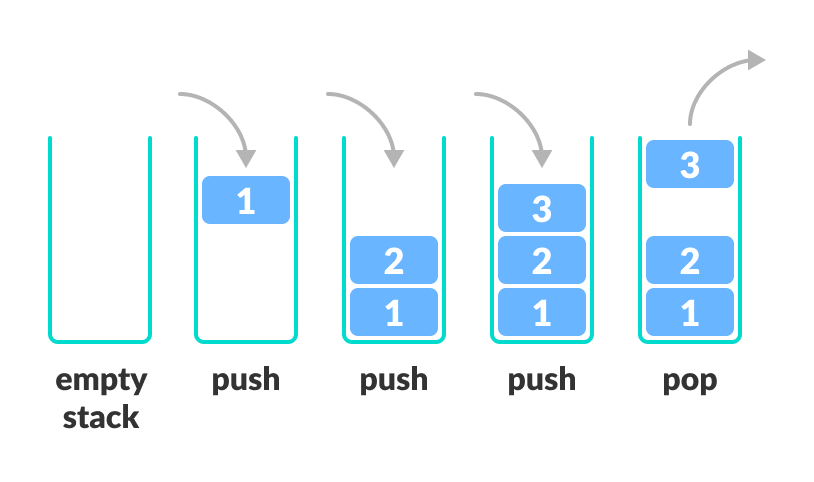A stack is a linear data structure that follows the principle of Last In First Out (LIFO). This means the last element inserted inside the stack is removed first.
- In programming terms, putting an item on top of the stack is called push and removing an item is called pop.
- In the givem image, although item 2 was kept last, it was removed first. This is exactly how the LIFO (Last In First Out) Principle works.
There are some basic operations that allow us to perform different actions on a stack.
- Push: Add an element to the top of a stack.
- Pop: Remove an element from the top of a stack.
- IsEmpty: Check if the stack is empty.
- IsFull: Check if the stack is full.
- Peek: Get the value of the top element without removing it.
For the array-based implementation of a stack, the push and pop operations take constant time, i.e. O(1).
Although stack is a simple data structure to implement, it is very powerful. The most common uses of a stack are:
- To reverse a word - Put all the letters in a stack and pop them out. Because of the LIFO order of stack, you will get the letters in reverse order.
- In browsers - The back button in a browser saves all the URLs you have visited previously in a stack. Each time you visit a new page, it is added on top of the stack. When you press the back button, the current URL is removed from the stack, and the previous URL is accessed.
